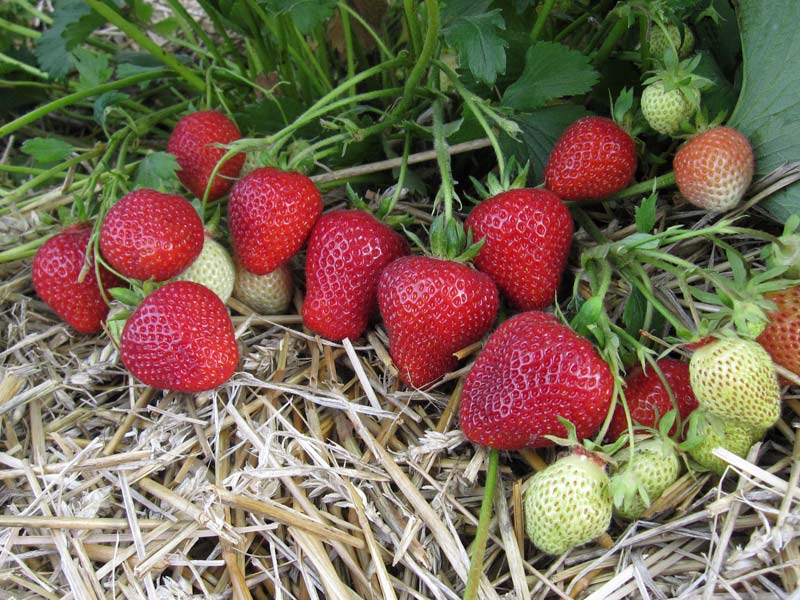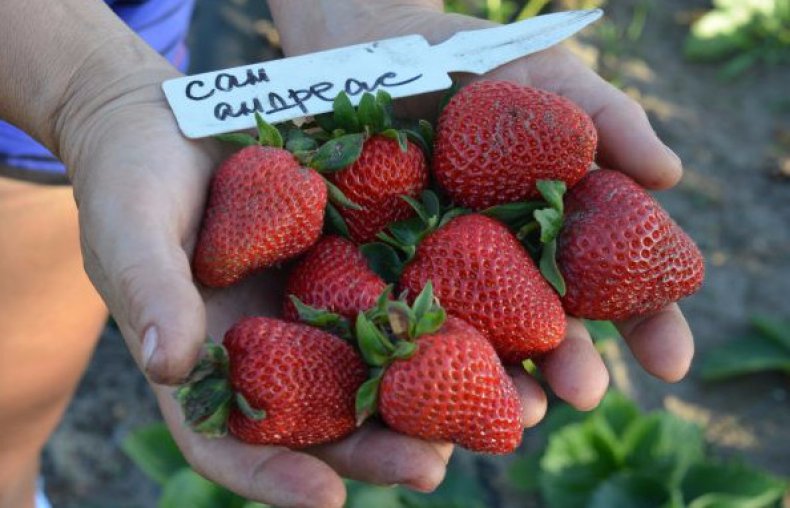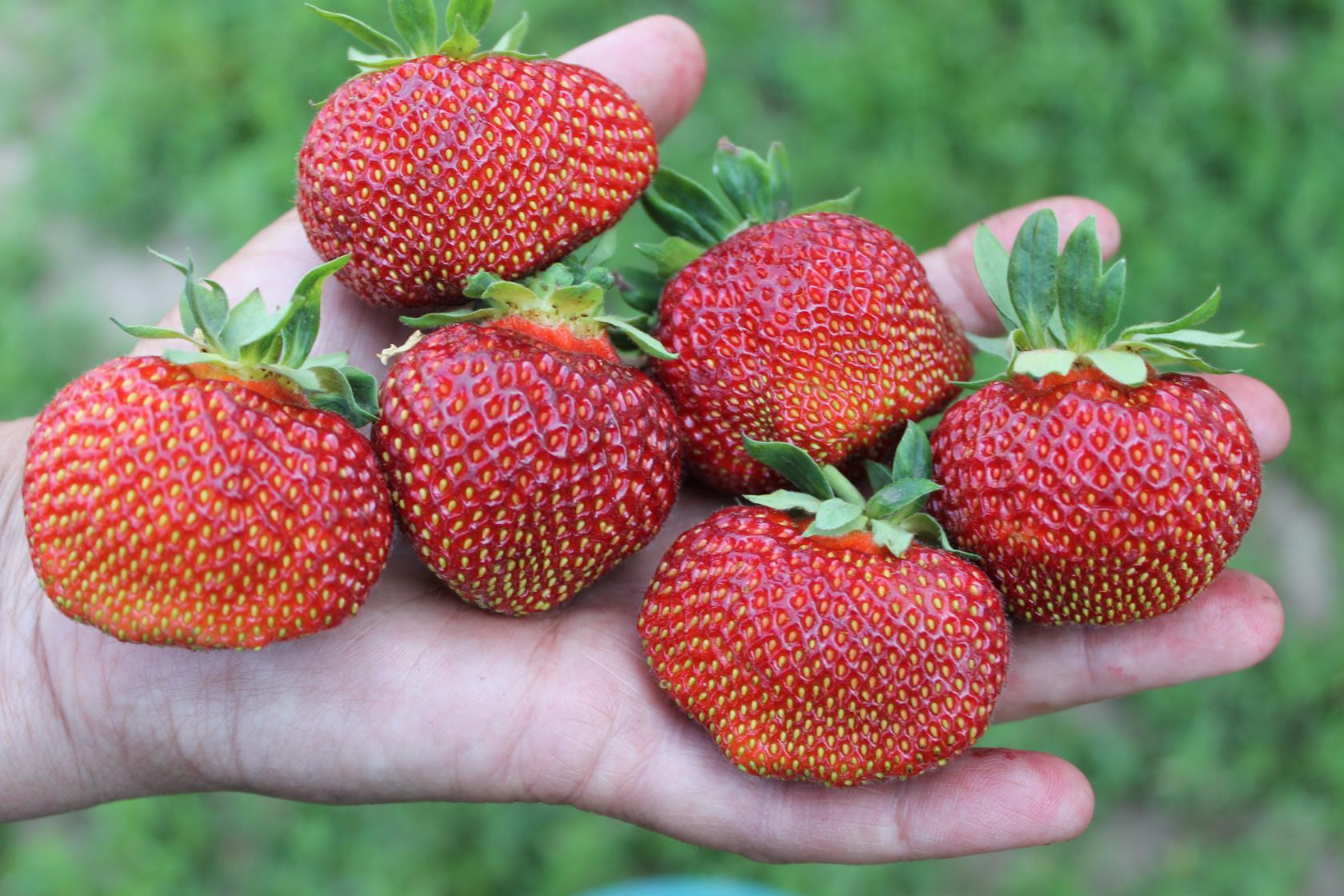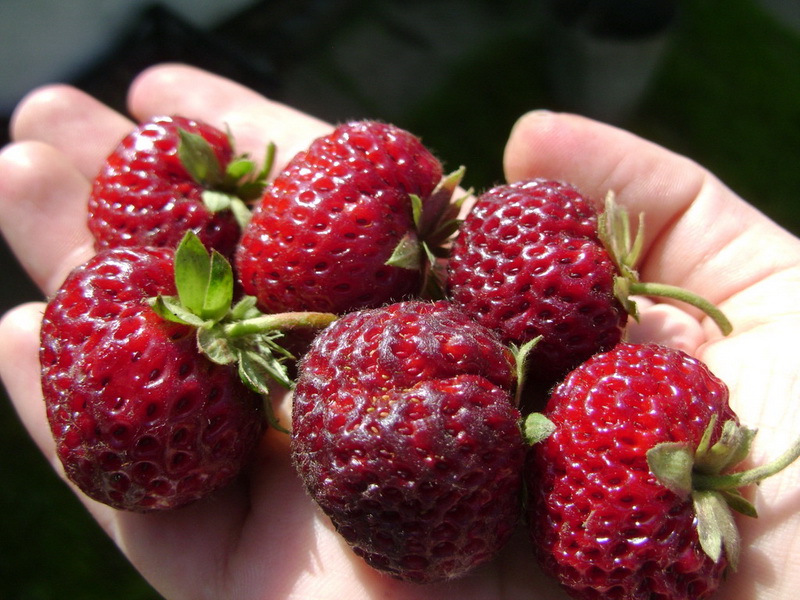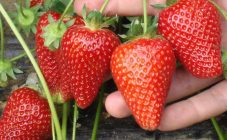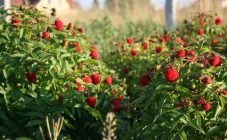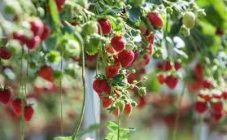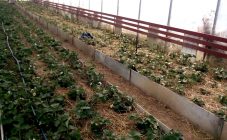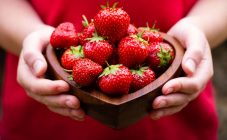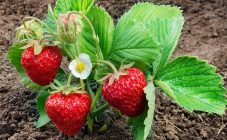Content:
Every year the horticultural market offers a variety of varieties of strawberries, the creation of which took into account the most diverse wishes of professional and novice gardeners. For example, one segment of gardeners prefers early sugar berries, for others the main thing is the indicator of the transportability of the strawberry variety, the late arrival of ripe fruits, the presence of resistance to certain diseases or damage by insect pests. This material will present a fairly voluminous list of the most commonly grown varieties among domestic summer residents, as well as a large list of additional varieties.
Top ten varieties
The TOP-10, which is made up of the best varieties of garden strawberries grown in Russia, located in various climatic zones, includes:
- Carmen is a large-fruited, medium-late Czechoslovakian variety with a high yield and cold resistance. The shrub is quite powerful, with thick stems, abundantly thickened with leaves. The bush begins to bloom in the first weeks of June. The size of the leaf is large, the color is dark green, the shape is oval, the edges are jagged. The size of the peduncles is large, the shape is cup-shaped, the stem has a pronounced thickness. The size of the inflorescences is large. The weight of the berry can be 40 grams, the shape is an expanded cone, the color is dark red. The consistency of the pulp is juicy, the color is dark red. The taste is sweet and sour. Varietal strawberry Carmen is easy to care for, suitable for industrial cultivation and sale;
- The giant is a mid-season, high-yielding variety that is cold-resistant and suitable for long-distance transportation. The height of the spreading shrub is 0.5 meters. The color of the foliage is light green, the size is really gigantic, the surface is corrugated. The average number of peduncles for one bush is 27. The number of ovaries formed on one peduncle is 7 pieces. Harvesting takes place in the second half of June. The juicy pulp has a light pineapple aroma. The berry is distinguished by a red hue, in shape it resembles a scallop, like the Mishutka variety. The average weight of a berry is 100 grams with a diameter of 8 centimeters. Giant varietal strawberries are suitable for freezing;
- Black Prince is an Italian medium early cold-hardy variety with a high yield. Harvesting falls on the 20th of June. The shrub is large. Thanks to the dense pulp, the crop can be stored for a long time, as well as transported over long distances. The berries are selling well. Truncated-conical 50-gram fruits are distinguished by a dark red color;
- Florence is an English late cold-hardy variety with disease resistance and high yield. Florence is an industrial variety, but it can also be classified as a dessert variety. The shrub is large, slightly spreading, with dark green foliage and powerful peduncles. The berries ripen in the first days of July. The average weight of a dark red conical strawberry fruit is 45 grams. Berries can be frozen or used to make dessert dishes, preserves or jams;
- Tsaritsa is a mid-season domestic remontant variety, characterized by high productivity, drought resistance and cold resistance. Also, the plant is immune to diseases and pests. Medium spreading bush - medium leafy. The surface of the green leaf has no pubescence. The miniature inflorescence contains a large number of large bisexual flowers. One cone-shaped fruit, on average, weighs 45 grams and can have a color description ranging from red to maroon. The dense pulp of large strawberries has a juicy sweet and sour taste;
- Monterey is a remontant mid-early American variety that is resistant to all diseases except powdery mildew. Shrub - medium leafy with green foliage. The juicy pulp has a sweet taste. Strawberries bloom by early May. The average weight of a biconical berry is 35 grams. The crop is harvested in early June. Strawberries are suitable for freezing and long-distance transportation from the region of their cultivation Kuban;
- San Andreas is an American high-yielding early strawberry that is resistant to disease and high temperatures. A medium-sized shrub with light green foliage and a strong root system. Glossy red fruits - firm in consistency. The shape of a 35-gram berry is oblong, with a rounded end. The color of the sweet-sour pulp is bright orange. This unusual variety is suitable for long-term storage and transportation from the area where it is best grown - the Krasnodar Territory and the strip of the Chernozem region. Also, this variety grows well in the Volga region and the Moscow region;
- Korona is a Dutch medium early cold-hardy sweet strawberry variety with high demands on cultivation techniques. The shrub has a low height and weak foliage. The harvest season is at the end of June. On average, a conical, deep red strawberry weighs 18 grams. The pulp has a juicy and sugary texture. The variety is cold and drought tolerant, but prone to gray mold disease and does not tolerate diseases such as white spot, and is also not suitable for transportation. The crop can be eaten fresh, frozen or used in the preparation of compote, jelly, jams;
- Honey is a fruitful, early-maturing American variety. Flowering shrub, characterized by high height and spreading, occurs in April, harvesting - at the end of May. The plant has a powerful root system. The dark green leaves are large in size. On average, a red conical strawberry weighs 20 grams. The berries have a juicy pale scarlet pulp. This delicious variety is suitable for long distance transportation and is grown for sale, including in regions such as Siberia or the Middle Urals;
- The shelf is a mid-season Dutch variety that is easy to grow. The bush of medium height is densely leafy. The shiny dark red strawberry has a caramelly sweet taste and weighs about 15 grams. The variety is suitable for planting in Leningradsky, Moskovsky and other regions of the north-western and central districts.
Agricultural technology for growing crops
Any varietal types of garden strawberries need proper care, which consists of a number of agronomic activities.
How to prepare the planting soil
The most suitable time for planting bushes in the ground is the second half of July. The planting material will take root and will not burn out under the sun's rays if you plant it in a new place in cool weather or in the evening. The soil must be prepared in advance: two months before the start of planting work.
The selected open area should be distinguished by an even relief, as well as abundantly illuminated by the sun's rays - only in such conditions the shrub will give a bountiful harvest, and also will not be exposed to diseases of the foliage or root system.Planting in clay or sandy soil will lead to root rot, since these types of soil are characterized by poor air exchange, which leads to stagnation of the liquid. The acidity level of the soil should not exceed the average. Also, the planting area is cleared of all weeds, after which repeated digging of the earth is carried out.
Planting a strawberry bush
Shrubs of early or mid-early varieties are grown at a close distance from each other - no more than 15 centimeters, subject to the row spacing of no more than 65 centimeters. When growing late varieties, the minimum distance between bushes is 20 centimeters.
How to water strawberries
Watering young shrubs with root water will erode the soil, making the plant unable to take root in a new area. It is best to irrigate young bushes using a garden sprayer. Abundant watering should be carried out within four days. After fixing the root system, the number of watering works is reduced to once a week, preventing the formation of cracks on the surface of the earth.
How to fertilize
The first fertilization of the soil is carried out after the first fruiting, for which all the useful trace elements introduced before planting are spent. Fertilize strawberries with ammonia or superphosphate no later than mid-August. The bush that has not yet fruited is fertilized in the next spring season.
Treatment of diseases and preventive measures
Most often, strawberries are affected by the following diseases:
- Brown or white spots on the leaves, stopping the growth of the shrub and facilitating the crushing of the berries. You can cure this disease by spraying the bush with a soap-based solution. A preventive measure is to carry out this procedure in the spring and winter seasons for all plantings;
- Powdery mildew, in which leaves curl and become brown, followed by damage to the stem. A plaque appears on the fruits, which leads to their decay. The solution to this problem is the treatment with a sulfonamide solution;
- Gray rot, which has a fungal nature of the disease. You can stop the development of the lesion by removing diseased berries. Before the transition to the flowering stage of planting, they are processed using copper sulfate;
- A strawberry mite that destroys young foliage on a bush. The symptoms of the initial stage of the disease are the appearance of black dots with subsequent blackening.
Additional varieties of strawberries
The list of additional varieties of strawberries that are no less in demand among Russian summer residents includes a number of names:
- Kamrad the winner;
- Kokinskaya dawn;
- Irma;
- Salsa;
- Florin;
- Rumba;
- Baby elephant;
- Elvira;
- Fireworks;
- Mara de Bois;
- Honey;
- Bohemia;
- Capri;
- Russian size;
- Ducat;
- Holiday;
- Schneider;
- Fleur;
- Lyubava;
- Murano;
- Borovitskaya;
- Amulet;
- Furor;
- Deroyal;
- Accept;
- Cabrillo;
- Diamond;
- Knight;
- Novel;
- Laurent;
- Sensation;
- Fairy;
- Galya Chiv;
- Temptation;
- Cherry berry;
- Symphony;
- Figaro;
- Gariguetta;
- Cinderella;
- Olbia;
- Orlets;
- Sudarushka;
- Onda;
- Avis Delight;
- Geneva;
- Tago;
- Nightingale;
- Sarah;
- Portola;
- Milan;
- Aromas;
- Everest;
- Linos;
- Brighton;
- Vivaldi;
- Sunny meadow;
- Durban;
- Tsarskoye Selo;
- Rusich;
- Red Gauntlet;
- Beauty of Zagorya;
- Gourmet;
- Junia Smides;
- Belrubi;
- Carnival;
- Aprica;
- Maestro;
- Charlotte;
- White Swede;
- Camarose;
- Baron Solemacher;
- Marmion;
- Troubadour;
- Vivara;
- First kiss;
- Alexandria;
- Merlan;
- Flamenco;
- Fresco;
- Felicita;
- Zenith;
- Hope;
- Uralochka is pink;
- Shlisselburgskaya;
- Honey summer;
- Tristar;
- Yoke.
Today the selection offers thousands of varieties of strawberries for cultivation. Thus, the above list of varietal denominations is not exhaustive. Compliance with agricultural cultivation techniques is an important condition for improving the qualitative and quantitative indicators of yield, regardless of which variety was planted.

